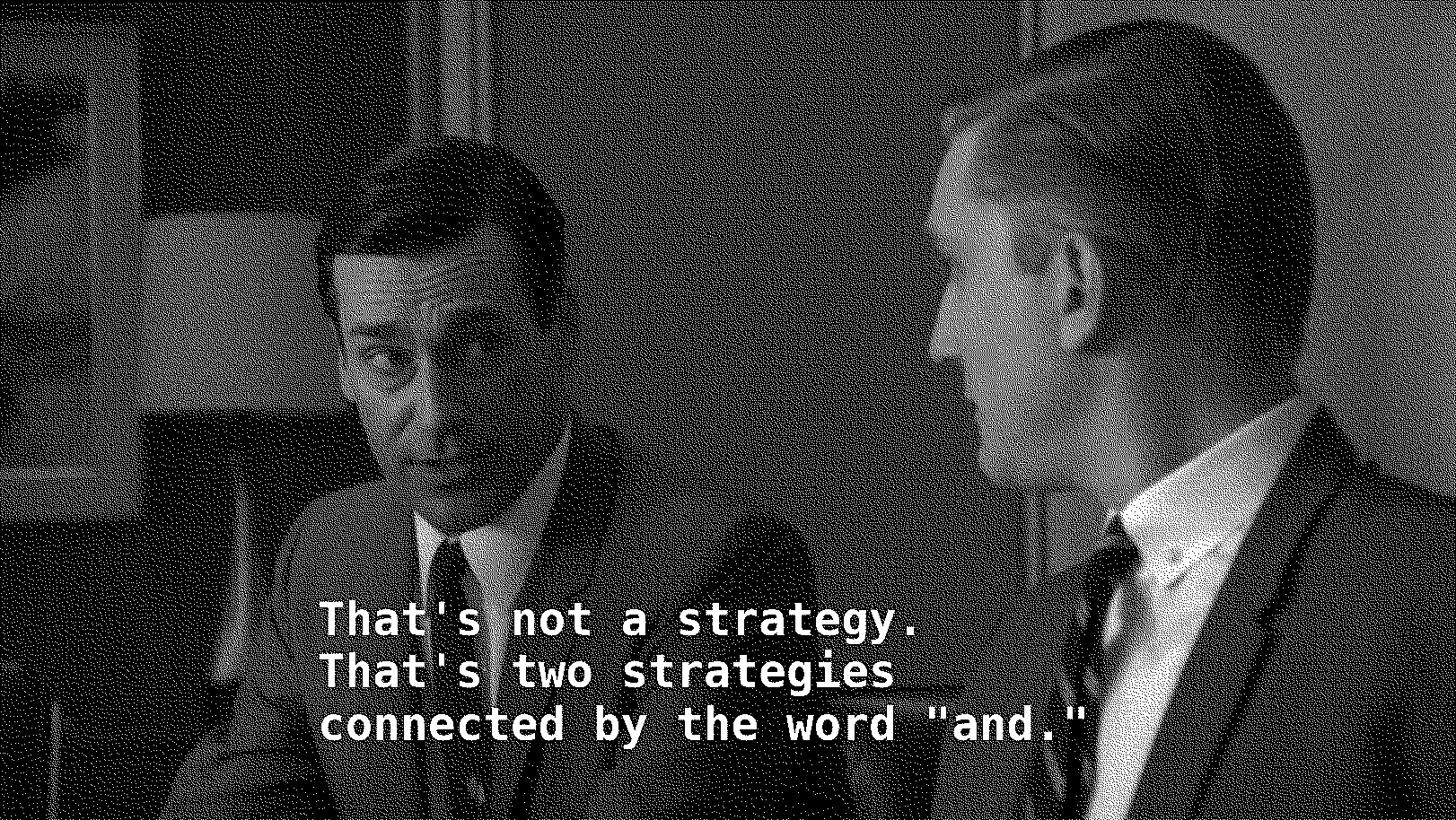We hear it all the time.
“We need to dimensionalize our brand,” they say.
“We need to appeal to a wider audience,” they say.
“We just need to be more accessible,” they say.
FUCK. THAT. SHIT.
Nobody wants a brand that tries to be everything to everyone.
Brand entropy is how companies lose strategic focus and pursue an ever-widening set of consumers, products, and messages.

It’s a close cousin of what automotive engineers call “parasitic loss,” where horsepower is siphoned off by an ever-expanding set of fan belts and auxiliary pumps. The car does more, but the wheels don’t turn as fast.
The job of brand managers is to fight brand entropy.
It means relentlessly pursuing a razor-sharp point of view that resonates with your core audience.
Take The North Face. Alex Honold free-soloing El Capitan is possibly the least “accessible” thing on the planet. It’s also one of the best pieces of branding this century. It does what TNF does at their best: sell the aspirational idea of exploration

The lesson is that only by deepening your focus can you widen your appeal.
People crave aspiration. They look to brands for models of how to be a better version of themselves, and buy from those that further their particular flavor of self-actualization.
(Or else they go on Amazon and buy what’s cheap with free two-day shipping.)
But creating aspiration requires understanding a particular audience.
Brands that are struggling to gain traction or find their next gear often ask us to help them reach entirely new market segments. “If only we could appeal to this other group,” the thinking goes, “we’d finally have a way to grow.”
This is precisely backwards.
Small brands win by establishing deep credibility with their core audience. This means developing a razor-sharp point of view, and sharing it with people on a local, regional, and national level. If you’re a small brand, you don’t need to appeal to a new kind of customer—you just need to connect better with the ones you already have.
An example is Evolv. To compete in a category dominated by heritage Italian climbing brands and traditional outdoor industry marketing, Evolv needed to find an opportunity outside climbing’s old guard. Figure helped Evolv identify and target an emerging generation of indoor climbers, and speak to them with a focus rooted in creativity and personal self-expression

Medium brands win by reaching more of that core audience around the world, and by expanding their product line to serve more of that same core audience’s needs. If you’re an established company with national stature, Brand Focus is key to driving alignment between departments, across categories, and through the seasons.
Figure helped Mountain Hardwear achieve this balance for the launch of their Fall 2019 collection

Big brands win by distilling what’s meaningful about their core credibility into a universally understood ideal. Exploration. Environmental preservation. Individual willpower. Swiss precision. German engineering. For these international companies, Brand Focus is about amplifying an essential idea on the level of global culture.
An example of this is Patagonia, with whom we worked to develop concepts for the Vote Climate Deniers Out of Office campaign. Bold and unapologetic, the campaign reinforced Patagonia’s unequivocal position as a leader in the environmental movement.
In the end, brand entropy is a natural part of a business’s life cycle. As leaders change and organizations grow, some loss of focus is inevitable. The key is finding the right time to lift your eyes from the bustle of the day-to-day, and look at the big picture of what’s unique and true about your organization.
So forget about broadening your brand. Let Brand Focus, and the creative work it inspires, drive your company’s next phase of growth.

1
Companies are familiar with using “and” to make everyone happy at the table while losing the direct approach they actually need to meet customers.
2
Entropy is the gradual decline of power and order. In this case it’s the decline of focus.

3
This is how TNF communicates in order to promot the purchase of a $300 puffy.

4
Personal expression meant moving outside of the literally world. Outside of the narrative that only climbing photography was the way to speak to climbers.

5
Focussing on the beauty of materials and human form was a key differentiator for MHW and they’re idea of Future Hygge.